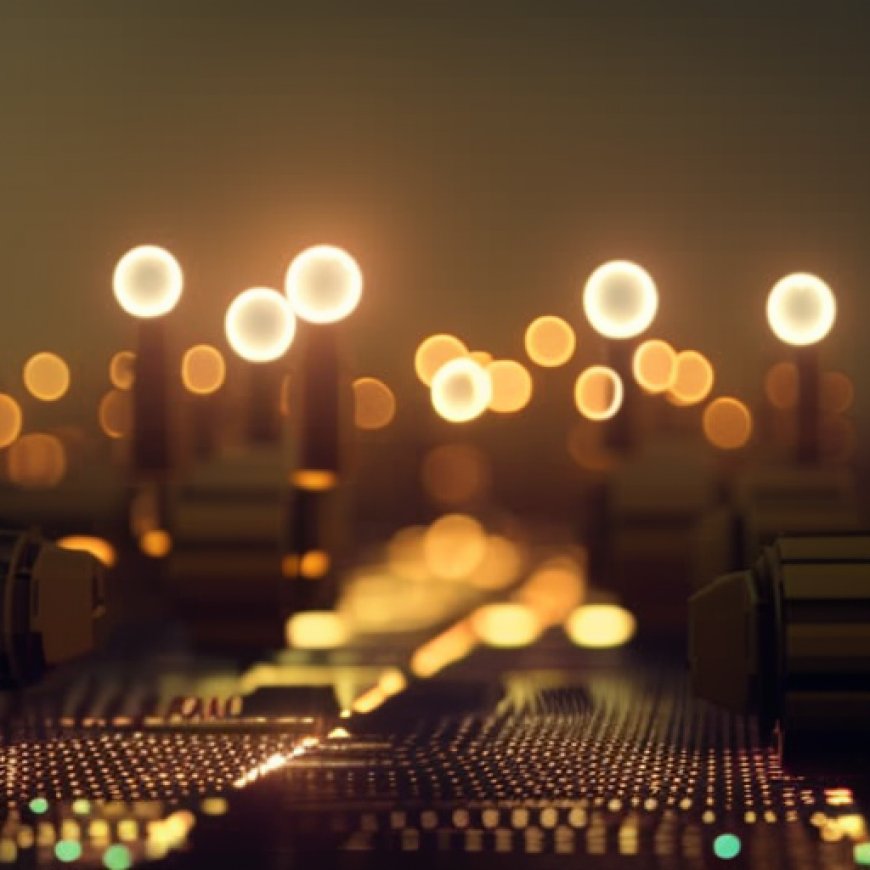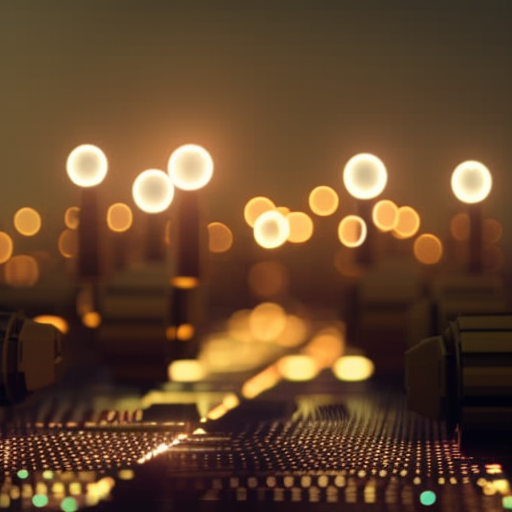Feds vote to reduce bottlenecks in connecting new power sources to the energy grid
Feds vote to reduce bottlenecks in connecting new power sources to the energy grid CNBC



Introduction
Federal regulators voted unanimously on Thursday to approve rules that aim to speed up the process of connecting new power sources to the energy grid. The rules could start to unclog a massive bottleneck that stands in the way of getting clean energy sources online to slow global warming, even if they aren’t a panacea.
Current Challenges in Connecting New Power Sources
To connect a new power source, like a new wind or solar farm, to the electric grid, energy generators have to submit an interconnection application to a transmission operator, which enters them into a queue. Then the grid operator has to complete a series of studies to measure what equipment and upgrades will be necessary and how much the whole process will cost.
The entire electric grid in the U.S. has installed capacity of 1,250 gigawatts. There are currently 2,020 gigawatts of capacity in the interconnection queue lines around the country, according to a report published in April by the Lawrence Berkeley National Laboratory. That includes 1,350 gigawatts of power capacity — mostly clean — looking to be constructed and connected to the grid. The rest, 670 gigawatts, is for storage.
As all this power generation sits waiting in queues, the power grid is maxed out. Last week, for example, the regional transmission organization that coordinates wholesale electricity movement in 13 states and the District of Columbia, PJM, issued an alert that the latest heatwave may drive electricity demand to the point that would require emergency operations. (In fact, it didn’t, and PJM canceled its alert at 5pm ET on Friday.)
New Rules to Streamline the Interconnection Process
The Federal Energy Regulatory Commission (FERC), the federal agency that regulates the transmission and wholesale sale of electricity, on Thursday voted to approve new rules to streamline and speed up the interconnection process.
Broadly speaking, the new rules include the following changes:
- First-ready, first-served cluster process: Transmission providers will be able to conduct larger, regional interconnection studies for clusters of power generation requests. Power generators will have to meet certain requirements to keep their place in the queue, including a financial deposit.
- Deadlines and penalties for transmission providers: Transmission providers will have strict deadlines to respond to power generators waiting in the queue, and will face penalties if they miss those deadlines.
- Generators can co-locate and share an interconnection request: The new rule requires transmission providers to allow co-located projects to submit one interconnection request. Power generators will be able to add a source of power to a single interconnection request. The rule also requires transmission providers to consider alternative transmission technologies.
This rule for co-locating is specifically going to help projects that have power generation and battery storage at the same spot. If a power generator wants to add a battery storage component to a project that is already in the queue, this will not qualify as a material modification that would require new studies and more delays.
Importance of the New Rules
For the United States to switch from generating electricity primarily from fossil fuels to renewable sources, the system of wires that carry electricity from where it is generated to where it is used needs to be expanded. The most concentrated sources of renewable power are often far from cities and industrial areas.
The process of building transmission lines has been slow and burdensome, leading to a backlog of clean energy projects waiting to connect to the grid. The new rules approved by FERC aim to address this issue and accelerate the transition to clean energy.
Reactions to the New Rules
Energy industry experts generally see the approval of the new rules as a positive first step. However, they also emphasize the need for further improvements, such as long-term transmission planning and reforming the method of paying for transmission upgrades.
The rules are seen as an incremental step in the right direction, but more needs to be done to address the fundamental constraints and underinvestment in transmission infrastructure.
SDGs, Targets, and Indicators in the Article
1. Which SDGs are addressed or connected to the issues highlighted in the article?
- SDG 7: Affordable and Clean Energy
- SDG 9: Industry, Innovation, and Infrastructure
- SDG 13: Climate Action
The article discusses the need to connect new clean energy sources to the energy grid, which aligns with SDG 7’s goal of ensuring access to affordable, reliable, sustainable, and modern energy for all. It also highlights the challenges and bottlenecks in the current energy grid infrastructure, which relates to SDG 9’s focus on building resilient infrastructure, promoting inclusive and sustainable industrialization, and fostering innovation. Additionally, the article mentions the urgency of addressing climate change and transitioning to renewable energy sources, which connects to SDG 13’s objective of taking urgent action to combat climate change and its impacts.
2. What specific targets under those SDGs can be identified based on the article’s content?
- SDG 7.2: Increase substantially the share of renewable energy in the global energy mix
- SDG 9.1: Develop quality, reliable, sustainable, and resilient infrastructure
- SDG 9.4: Upgrade infrastructure and retrofit industries to make them sustainable
- SDG 13.2: Integrate climate change measures into national policies, strategies, and planning
The article emphasizes the need to connect more renewable energy sources to the grid, which aligns with SDG 7.2’s target of increasing the share of renewable energy in the global energy mix. It also highlights the importance of improving the infrastructure and grid system to accommodate clean energy sources, which relates to SDG 9.1’s target of developing quality, reliable, sustainable, and resilient infrastructure. Additionally, the article mentions the need to upgrade and retrofit industries to make them sustainable, which connects to SDG 9.4’s target. Finally, the article emphasizes the urgency of integrating climate change measures into policies and planning, aligning with SDG 13.2’s target.
3. Are there any indicators mentioned or implied in the article that can be used to measure progress towards the identified targets?
- Percentage of renewable energy in the global energy mix
- Investment in renewable energy infrastructure
- Number of interconnection applications processed within specified deadlines
- Reduction in the average waiting time for power generators in interconnection queues
The article does not explicitly mention specific indicators, but progress towards the identified targets can be measured using indicators such as the percentage of renewable energy in the global energy mix, which reflects progress towards SDG 7.2. Investment in renewable energy infrastructure can also be used as an indicator to assess progress towards SDG 9.1 and 9.4. Additionally, tracking the number of interconnection applications processed within specified deadlines and the reduction in the average waiting time for power generators in interconnection queues can provide insights into progress towards improving the interconnection process and achieving SDG targets.
Table: SDGs, Targets, and Indicators
| SDGs | Targets | Indicators |
|---|---|---|
| SDG 7: Affordable and Clean Energy | 7.2: Increase substantially the share of renewable energy in the global energy mix | Percentage of renewable energy in the global energy mix |
| SDG 9: Industry, Innovation, and Infrastructure | 9.1: Develop quality, reliable, sustainable, and resilient infrastructure 9.4: Upgrade infrastructure and retrofit industries to make them sustainable |
Investment in renewable energy infrastructure |
| SDG 13: Climate Action | 13.2: Integrate climate change measures into national policies, strategies, and planning | Not explicitly mentioned in the article |
Behold! This splendid article springs forth from the wellspring of knowledge, shaped by a wondrous proprietary AI technology that delved into a vast ocean of data, illuminating the path towards the Sustainable Development Goals. Remember that all rights are reserved by SDG Investors LLC, empowering us to champion progress together.
Source: cnbc.com

Join us, as fellow seekers of change, on a transformative journey at https://sdgtalks.ai/welcome, where you can become a member and actively contribute to shaping a brighter future.







